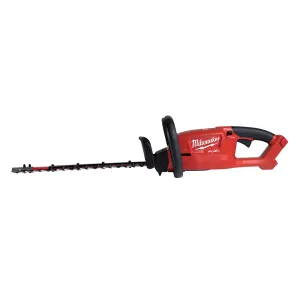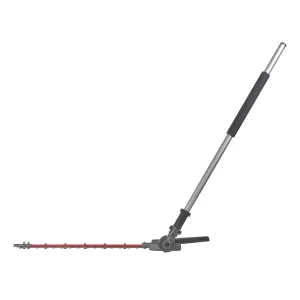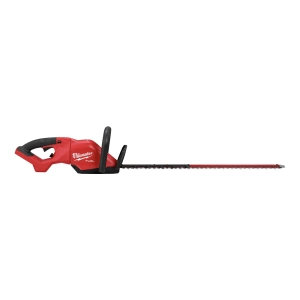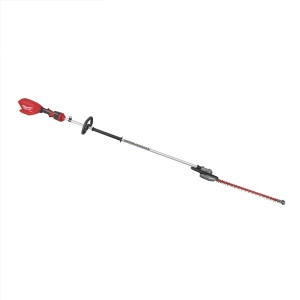Regularly trimmed hedges encourage healthy growth, provide great structure to a garden and help delineate boundaries in an aesthetically pleasing way.
Whether you’re a topiary expert, hedge-shaping amateur, or you just want to keep your hedges in shape, a hedge cutter really is an essential power tool.
When to undertake hedge trimming
The best time to trim most hedges is in late spring or early autumn. Most hedges will need trimming twice a year, formal hedges may require more frequent attention.
There are exceptions, however. Box hedges can be pruned in summer, as can hornbeam, beech, hawthorn, privet and cypress.
It is best to leave newly planted hedge for two to three years before attempting a trim – this will give them the best chance of establishing a healthy root system.
Always check for nesting birds before embarking on a hedge trimming exercise and wait until birds have fully fledged before starting.
Type of hedge
Before buying a hedge trimmer it’s worth trying to understand the type of hedges you need to trim.
Hedges with thicker woody stems like conifer and holly will need a powerful cutter with wider-spaced teeth to accommodate branches with wider diameters.
For example, the Webb 20V Cordless Hedge Trimmer has a 16mm teeth opening, whereas the Milwaukee 60cm Hedge Trimmer will cut up to 20mm in diameter.
If you think you’ll need to cut through thicker branches, consider a pruning saw instead.
While barrier hedges can be tackled with ladders, for safety reasons it is worth thinking about a long reach hedge trimmer, or attachment to enable you to keep your feet firmly on the ground while cutting hedges.
Many of these long reach trimmers and attachments will give you a 3m pole reach – enough to tackle even the tallest hedges!
Plug-in or cordless
Hedge trimming demands a bit of manoeuvrability so for most of us, a cordless trimmer is a must.
A plug-in or corded hedge trimmer might be slightly lighter than a battery-operated cordless trimmer, but a well-designed cordless hedge trimmer will balance the weight correctly to ensure you have the optimum ergonomic experience while using it. Hedge trimmers should not feel cumbersome or difficult to use.
Battery technology has developed at pace in recent years, so if you do select a cordless hedge trimmer, you can expect to match the power output of a traditional petrol trimmer - without the noise and exhaust.
Please check that your product contains a battery before purchasing, as some are sold as bare tools only. This is because some battery systems (like Milwaukee’s M18 batteries) are interchangeable between tools.
Our Milwaukee cordless hedge trimmers will give you up to two hours of continuous run time. This is a best-in-class run time for battery-operated hedge trimmers. It is more common for cordless hedge trimmers to give you around one-hour of continuous run time.
Bear battery quality in mind before making your choice – a large garden with multiple hedges will need a longer run time.
Blade type and length
Most hedge trimmers have a blade length of between 45 and 65cms. Generally speaking, the longer the blade length, the heavier the hedge trimmer.
Most trimmers sold at Agrigem are around 50cms in length – the ideal length for the majority of hedge trimming projects.
Hedge trimmers normally have two blades that operate by moving back and forth against each other, cutting through branches and leaves as the cutting edge of the blades align.
This motion does mean that the blades will require regular checking and lubrication as required.
General maintenance
Always clean your hedge trimmer once you’ve completed your project to remove any sticky plant sap and leaf residue.
Replace the blade cover before storing and consider blade sharpening as required – especially if your hedge trimmer has been stored for some time.
Finally, please ensure you wear the correct PPE when trimming hedges. Eye protection is a must. You might also consider gloves especially if cutting back conifers and Leylandii as their sap can irritate skin.












